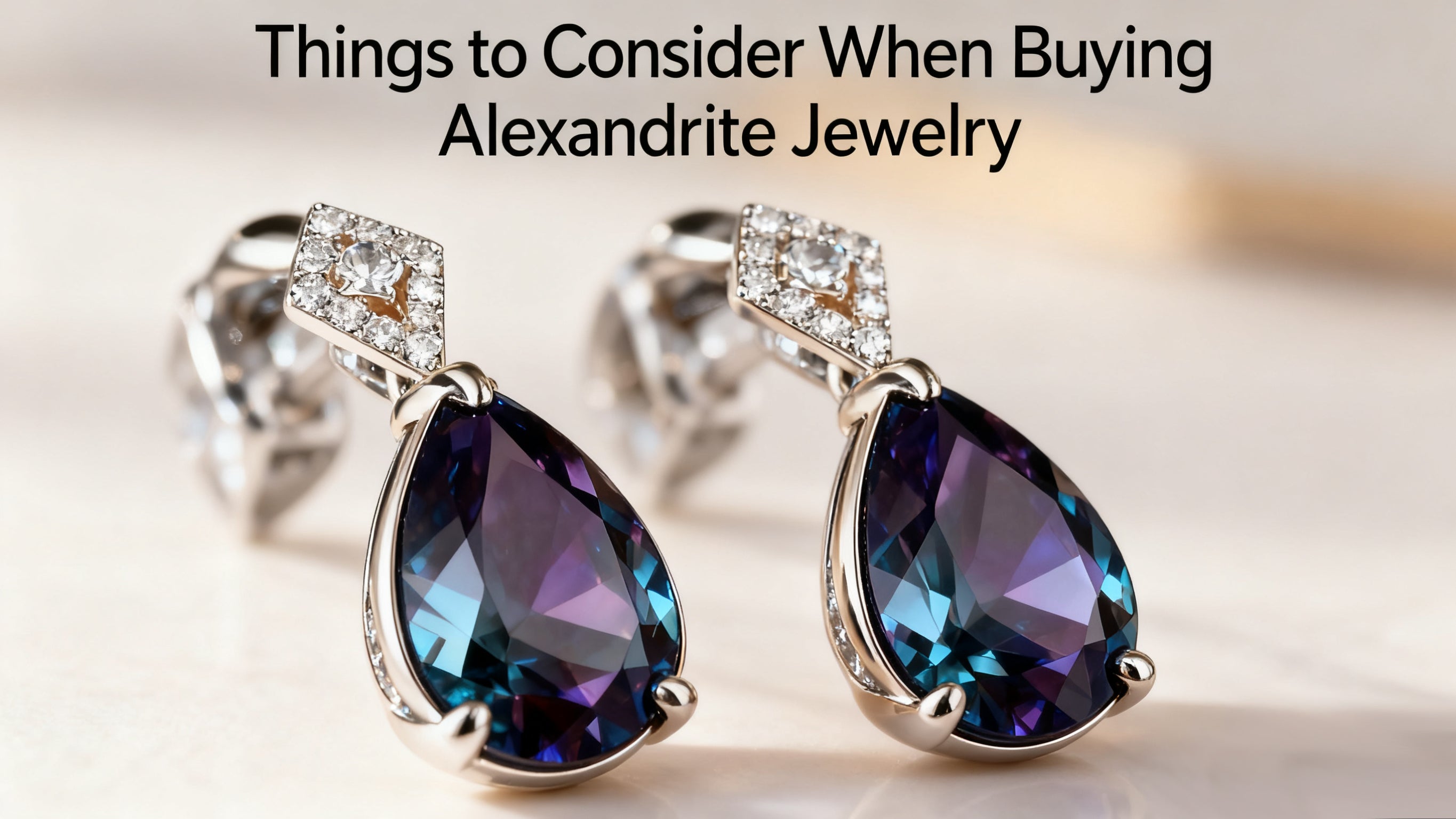Alexandrite, a gemstone as mysterious as it is mesmerizing, has captivated jewelry lovers for centuries with its rare ability to change color. Discovered in Russia’s Ural Mountains in the 19th century, this unique stone shifts from lush green or teal in daylight to rich red or purplish-red under incandescent light—a phenomenon known as “alexandrite effect” that makes it one of the most coveted gems in the world. If you’re drawn to its magic and considering adding alexandrite jewelry to your collection, here are key factors to keep in mind to ensure you make a wise and satisfying purchase.
Understand the Alexandrite Effect
The defining feature of alexandrite is its dramatic color change, so pay close attention to this when evaluating a stone. In natural daylight or fluorescent light, high-quality alexandrite typically displays a vivid green, emerald-green, or bluish-green hue. Under warm, incandescent light (like candlelight or traditional bulbs), it transforms into a striking red, raspberry-red, or purplish-red. The most valuable stones exhibit a sharp, distinct shift with intense saturation in both colors. Avoid stones with muted or indistinct color changes, as this significantly impacts their beauty and value.
Consider Origin and Rarity
Alexandrite’s origin plays a role in its rarity and price. Historically, Russian alexandrites from the Ural Mountains are the most legendary and sought-after, often commanding premium prices due to their exceptional color change and limited supply. However, today, significant deposits are also found in Brazil, Sri Lanka, Madagascar, and Tanzania. Brazilian alexandrites are known for their vibrant greens and reds, while stones from Sri Lanka may lean more toward yellowish-green to purplish-red. While Russian stones are prized, gems from other origins can still be stunning and more accessible, making them excellent options for those seeking beauty without the ultra-high price tag.
Evaluate Clarity and Cut
Like all gemstones, clarity matters in alexandrite. Ideally, look for stones with minimal inclusions (internal flaws) or blemishes (surface imperfections), as these can affect the stone’s brilliance and transparency. However, alexandrites often have some natural inclusions, and completely flawless stones are extremely rare—so a balance between clarity and affordability is key.
The cut of the alexandrite also influences its appearance. A well-cut stone will maximize its color change, brilliance, and symmetry. Common cuts for alexandrite include oval, cushion, and emerald cuts, which showcase the color shift effectively. Avoid poorly cut stones that appear dull or fail to highlight the gem’s unique properties.
Alexandrite as a Birthstone, Its Meanings and Effects
Alexandrite holds a special place as the birthstone for those born in June, alongside moonstone and pearl. This makes it a meaningful and personal choice for June birthdays, offering a unique alternative to more common birthstones. Beyond its association with birthdays, alexandrite is rich in symbolism and is believed to have various positive effects.
The gemstone is often associated with balance and transformation, mirroring its own color-changing property. It is thought to bring harmony to one's life, helping to balance emotions and thoughts. Many believe that alexandrite can enhance intuition and creativity, making it a great companion for those who seek to tap into their inner wisdom and express themselves artistically.
In terms of its supposed effects, alexandrite is said to promote prosperity and good fortune. It is also considered a stone of love and commitment, making alexandrite jewelry a wonderful choice for engagement rings, anniversary gifts, or tokens of deep affection. Wearing alexandrite is believed to bring a sense of calm and positivity, helping the wearer navigate life's changes with grace.
These meanings and effects add another layer of allure to alexandrite jewelry, making it not just a beautiful accessory but a piece that holds personal and symbolic value. Whether you're drawn to it as a June birthstone, for its supposed metaphysical properties, or simply for its stunning beauty, alexandrite jewelry is a meaningful addition to any collection.

Set a Budget and Choose the Right Jewelry Style
Alexandrite is a rare gem, so it’s important to set a realistic budget. Prices vary widely based on factors like size, color change, origin, and clarity—smaller stones (under 1 carat) are more affordable, while larger, high-quality specimens can be quite expensive. When it comes to jewelry style, consider how you plan to wear your alexandrite piece. A solitaire alexandrite ring makes a striking alternative to traditional engagement rings, while earrings or pendants can add a touch of elegance to both casual and formal outfits. For those seeking a piece that embodies all these considerations—exceptional color change, thoughtful design, and meaningful symbolism—our 1.5CT Pear Nature Inspired Lab Alexandrite & Moonstone Leaf Wedding Bridal Set beautifully encapsulates the magic of alexandrite. Crafted with a pear-cut alexandrite centerpiece that showcases the stone’s legendary color transformation, this set pairs the gem with moonstone accents and delicate leaf detailing—perfect for June brides or anyone who appreciates nature-inspired elegance. For everyday wear, opt for settings with durable metals like platinum or white gold to protect the gem. For special occasions, consider designs that highlight the stone’s color change, such as halo settings or paired with diamonds to enhance its brilliance.


0 comments